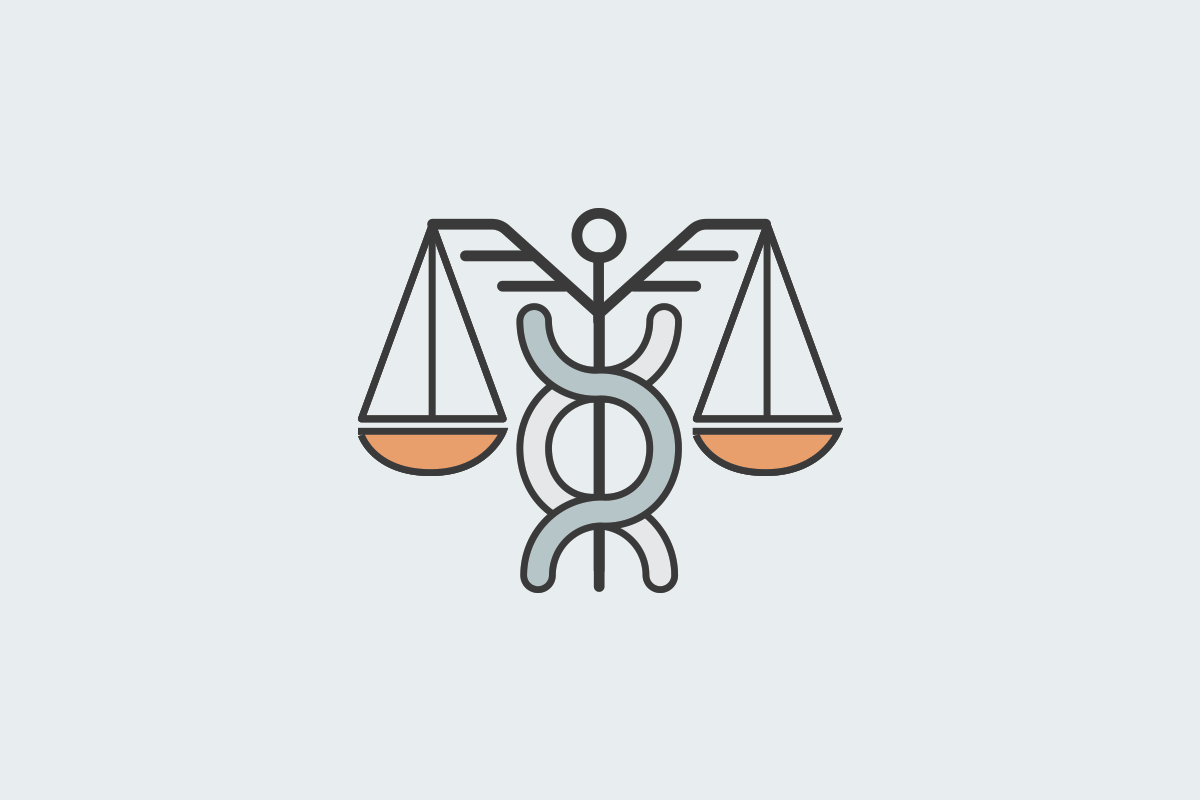Kindness— a word many have long associated with “softness” or “weakness.” As research on kindness continues to emerge, views around this topic in the workplace are evolving. Kindness is defined as being compassionate, considerate, and caring for others without the expectation of receiving something in return. According to the Random Acts of Kindness Foundation, kindness…
Your Welcoa membership has expired.
The Regulation of Employee Assistance Programs (EAPs)
The following article does NOT constitute legal advice and should not be used as such. It is for educational purposes only. Readers should retain legal counsel to obtain definitive answers.
According to the Bureau of Labor Statistics, in March 2016, 54% of civilian workers had access to employee assistance programs, or “EAPs.” Only 41% of workers had access to wellness programs. Thus, EAPs seem to be more prevalent in the workplace than wellness programs, even though both arguably promote wellness.
What constitutes an EAP may be different for different employers. Some may offer a range of benefits, such as financial, legal as well as health or wellness services. Others may offer counseling services only. Nevertheless, with regard to health-related services, EAPs generally fall into two types. The first type is one that mainly provides referral services. The second type actually provides the health-related services. Depending on the type and level of health services provided, an EAP may be subject to different legal requirements. This blog post will address when an EAP may be subject to COBRA, ERISA and the Affordable Care Act requirements, as well as the Mental Health Parity and Addiction Equity Act (MHPAEA) and state insurance laws such as California’s Knox-Keene Act.
COBRA
COBRA is the “Consolidated Omnibus Budget Reconciliation Act” and applies to “group health plans.” ERISA § 601. It requires group health plans maintained by employers with at least 20 employees to offer continuation coverage to covered employees, former employees, spouses, former spouses, and dependent children when the health coverage is lost due to certain “qualifying” events. See DOL FAQ. A typical qualifying event is when an employee is terminated from his or her job. Id. If an employee chooses to continue his or her coverage through COBRA, the employee may pay up to 102% of the total premium cost. Id.
EAPs may be subject to COBRA if the EAP falls within the definition of “group health plan.” COBRA defines a “group health plan” as a plan that provides “medical care” (as defined in IRC § 213(d)) to participants or beneficiaries directly or through insurance, reimbursement, or otherwise. “Medical care” is defined as amounts paid:
- for the diagnosis, cure, mitigation, treatment, or prevention of disease, or for the purpose of affecting any structure or function of the body,
- for transportation primarily for and essential to medical care referred to in subparagraph (A),
- for qualified long-term care services (as defined in section 7702B(c)), or
- for insurance (including amounts paid as premiums under part B of title XVIII of the Social Security Act, relating to supplementary medical insurance for the aged) covering medical care referred to in subparagraphs (A) and (B) or for any qualified long-term care insurance contract (as defined in section 7702B(b)).
26 USC § 213(d). The most relevant part of the “medical care” definition is Subsection A, above. Arguably, if an employer-sponsored EAP is involved in diagnosing, curing, mitigating, treating or preventing a health condition, it would fall within the definition of “group health plan” and be subject to COBRA requirements. These requirements include providing employees notice of their rights to continue coverage, and then allowing employees to continue using the EAP even after they lose their job for up to 36 months after the job loss, depending on the circumstances. See ERISA §§ 602 and 606.
An EAP that merely provides referral services is likely not a group health plan. For example, an EAP hotline that gives employees a list of psychologists in the area would not likely be a group health plan. See DOL Advisory Opinion 91-26A (July 19, 1991). However, an EAP that provides health-related services, such as mental health or substance abuse counseling, arguably qualifies as a group health plan and must comply with COBRA requirements.
ERISA
ERISA applies to “Employee Welfare Benefit Plans,” which are defined as “any plan, fund, or program which …is…established or maintained by an employer or by an employee organization, or by both, to the extent that such plan, fund, or program was established or is maintained for the purpose of providing for its participants or their beneficiaries, through the purchase of insurance or otherwise, (A) medical, surgical, or hospital care or benefits, or benefits in the event of sickness, accident, disability, death or unemployment, or vacation benefits, apprenticeship or other training programs, or day care centers, scholarship funds, or prepaid legal services.” ERISA § 3 (emphasis added). If a plan is subject to ERISA, it must comply with summary plan description and annual reporting requirements, for example. ERISA §§ 102 and 103.
The Department of Labor has stated that EAP benefits for the treatment of drug and alcohol abuse, stress, anxiety, depression and similar health and medical problems constitute “medical” benefits or “benefits in the event of sickness” within the meaning of ERISA’s definition for employee welfare benefit plans. See DOL Opinion Letter 88-4A, summary available at https://benefitslink.com/articles/substance010604.html. Thus, an EAP that provides counseling services to participants who can also be referred out for further services would be subject to ERISA. Id. Likewise, an EAP that provides counseling for employees who have certain described personal problems, and the counselor identifies the problem, suggests a plan of action and refers the employee to an outside service would also be subject to ERISA. See DOL Opinion Letter 83-35A, summary available at https://benefitslink.com/articles/substance010604.html.
On the other hand, there is a strong argument that an EAP that was merely a referral service would not be subject to ERISA requirements.
Affordable Care Act (ACA) and MHPAEA
EAPs are exempt from ACA requirements if they qualify as “excepted benefits.” 79 Fed. Reg. 59130, 59132-34 (Oct. 1, 2014). Excepted benefits are generally exempt from health reform requirements added by the Health Insurance Portability and Accountability Act (HIPAA) as well as the ACA. Id. If an EAP does not qualify as an excepted benefit, then it would be subject to ACA market reforms, such as annual dollar limits, rating limits and minimum essential coverage requirements, as well as MHPAEA requirements.
There are four categories of excepted benefits. The first category includes benefits that are generally not health coverage, such as automobile insurance, liability insurance, worker’s compensation and accidental death and dismemberment coverage. Id. The benefits in this category are excepted from HIPAA and ACA insurance market reforms. Id. In contrast, the benefits in the second, third and fourth categories are types of health coverage but are excepted only if certain conditions are met. Id.
The second category of excepted benefits is limited excepted benefits, which may include limited-scope vision or dental benefits, and benefits for long-term care, nursing home care, home health care, or community-based care. Id. The third category of excepted benefits, referred to as “noncoordinated excepted benefits,” includes both coverage for only a specified disease (such as cancer-only policies), and hospital indemnity or other fixed indemnity insurance. Id. The fourth category is supplemental excepted benefits, which must be coverage supplemental to Medicare coverage or veteran’s health care benefits, or similar coverage that is supplemental to a group health plan. Id. For each of these three categories, to qualify as excepted benefits, the coverage must be provided under a separate policy, certificate or contract of insurance. Id.
EAPs can fall within the fourth category of excepted benefits: benefits supplemental to group health plan coverage. However, to qualify as excepted benefits and therefore be exempt from complying with ACA insurance market reforms and MHPAEA requirements, the EAP must meet four criteria:
- The EAP must not provide significant benefits in the nature of medical care, taking into account the amount, scope, and duration of covered services. Id. For example, an EAP that provides only limited, short-term outpatient counseling for substance use disorder services (without covering inpatient, residential, partial residential or intensive outpatient care) without requiring prior authorization or review for medical necessity does not provide significant benefits in the nature of medical care. Id. EAPs that provide disease management services such as laboratory testing, counseling and prescription drugs for individuals with chronic conditions, such as diabetes, do provide significant benefits in the nature of medical care and therefore would fail to qualify as excepted benefits. Id.
- The EAP must not be coordinated with group health plan benefits. Id. That is, participants in the group health plan must not be required to use and exhaust benefits under the EAP (making the EAP a gatekeeper) before an individual is eligible for group health plan benefits. Id. Also, EAP participation must not depend upon group health plan participation. Id. However, the EAP may be financed by the group health plan. Id.
- To qualify as excepted benefits, the EAP may not require employee premiums or contributions as a condition of participation in the EAP. Id.
- The EAP may not impose any cost-sharing requirements. Id.
EAPs that meet these four criteria are exempt from meeting requirements such as annual dollar limits, the ACA penalty on employers for failing to offer minimum essential coverage, as well as mental health parity requirements. Id. Also, to the extent that the EAP is an employer’s only health-related benefit, EAPs that qualify as excepted benefits will not preclude an employee from qualifying for premium tax credits through the ACA insurance exchanges. Id.
State Insurance Laws
Employer-sponsored EAPs that offer “medical care or benefits,” as described above, and therefore are subject to ERISA, should not be subject to state insurance laws. ERISA section 514(a) “broadly preempts all state laws insofar as they “relate to” employee benefit plans covered by Title I of ERISA.” DOL Advisory Opinion Letter 96-06A (March 25, 1996). Self-insured plans may not be deemed to be insurance companies or engaged in the business of insurance for purposes of state insurance regulation. Id. State laws also may not directly regulate insured group health plans, but may indirectly regulate those plans through regulation of the plan’s insurer and its insurance contracts. Id.
Most states do not regulate EAPs. However, California’s Knox-Keene law has a section that regulates EAPs. 28 CCR § 1399.43.14. Knox-Keene requires EAPs that, for example, allow more than three counseling sessions within a six-month period, to comply with various California insurance regulations, such as obtaining an insurance license. Knox Keene Act § 1349. The Department of Labor has opined that with regard to other benefit designs, such as incentivizing employees to select certain plan options, ERISA preempts Knox-Keene. DOL Advisory Opinion Letter 96-06A (March 25, 1996). Citing California case law, the DOL agreed that “ERISA preempts California’s Knox-Keene Act to the extent that Knox-Keene seeks to regulate ERISA-covered employee benefit plans. If California desires to regulate such employee benefit plans as part of its comprehensive health care service legislation, then California must ask Congress to make appropriate changes in ERISA.” Id. (citing Hewlett Packard Co. v. Barnes, 571 F.2d 502, 505 (1978)).
The DOL stated that the holding in Barnes applies regardless of whether a plan is self-insured or fully insured. Id. Citing a US Supreme Court case, the DOL notes that “the basic thrust of the [ERISA] preemption clause was to avoid a multiplicity of regulation in order to permit the nationally uniform administration of employee benefit plans.” Id. (citing New York State Conference of Blue Cross & Blue Shield Plans v. Travelers Ins. Co., 115 S.Ct. 1671, 1677 (1995)).
Whether it is Knox-Keene or any other state insurance law, there is an argument that an EAP subject to ERISA requirements should not also be subject to state insurance law. Such dual compliance defeats the purpose of ERISA, which as noted above in the Traveler’s case, was to create uniform administration of employee benefit plans. Perhaps EAP vendors who offer unlimited counseling services for a flat fee could qualify as an insurer if they are taking on risk. But, it is unclear how state regulation could circumvent ERISA’s preemption clause if the EAP is funded completely by the employer based on the number of services provided. Regardless of how the EAP services are structured, it is vital that EAP programs consult with legal counsel to ensure that they accurately identify and comply with the laws that apply to them. Please contact the Center for Health and Wellness Law, LLC if you would like to learn more about how we can help in that process.

Barbara J. Zabawa
President of the Center for Health and Wellness Law, LLC
wellnesslaw.com
Health Promotion Program Legal Updates*
Every 3rd Wednesday from 10:00–11:00 AM CT
*This is an exclusive WELCOA Member Resource.




